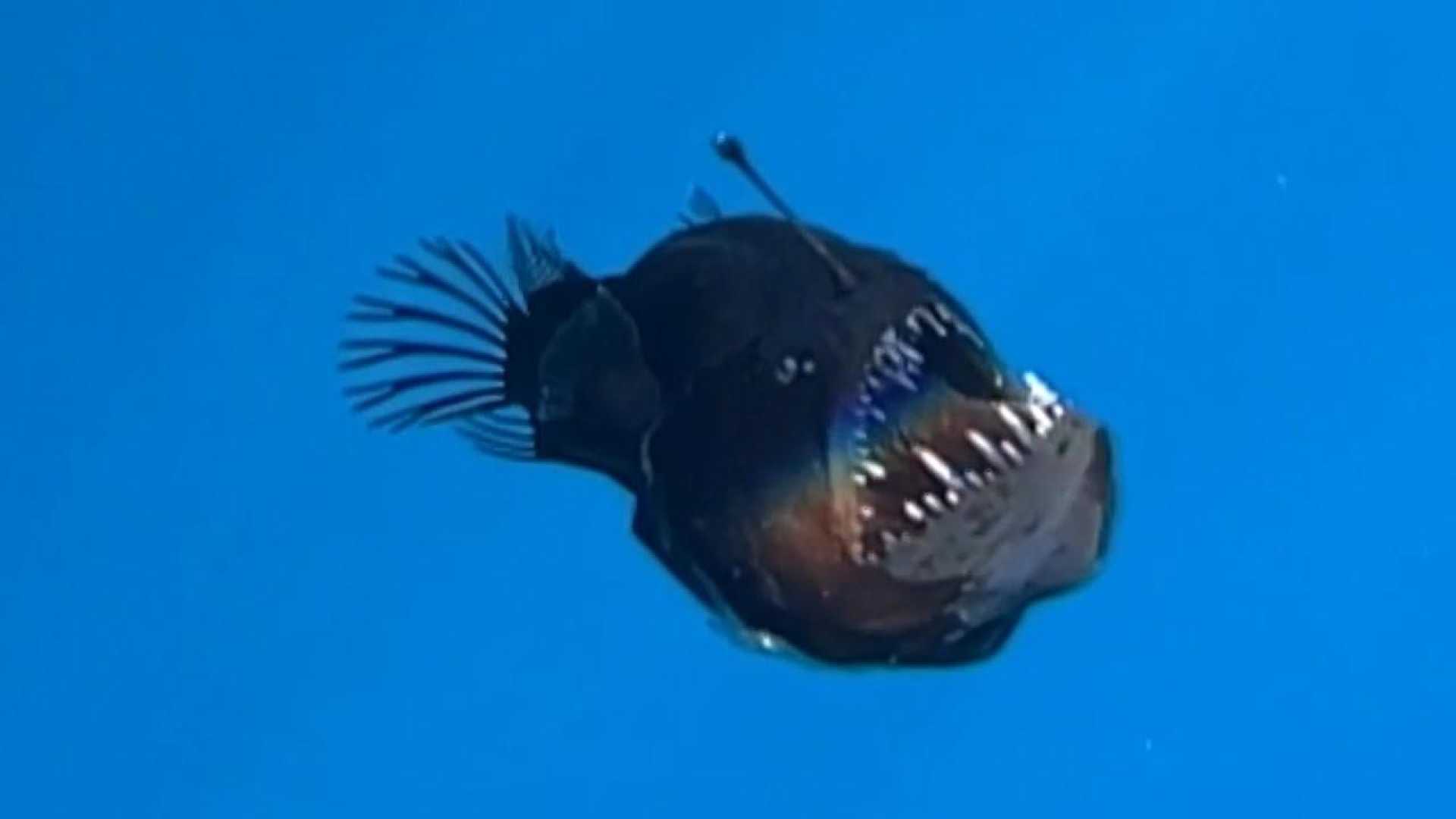News
Rare Black Seadevil Anglerfish Spotted Swimming Near Surface in Canary Islands

LAS PALMAS, Spain — Researchers made an extraordinary discovery on January 26 when they captured footage of a black seadevil anglerfish swimming near the ocean’s surface off the coast of the Canary Islands. This sighting marks only the second time this deep-sea species has ever been observed alive.
The anglerfish, identified as a female Melanocetus johnsonii, was first seen by a team from the NGO Condrik Tenerife and marine photographer David Jara Boguñá while conducting research on pelagic sharks approximately 1.2 miles off the coast of Tenerife.
“It’s a legendary fish that few people will have had the privilege of observing alive,” Boguñá wrote in an Instagram post, emphasizing the significance of the unprecedented event.
Typically residing at depths between 650 and 6,500 feet, black seadevils are known for their distinctive bioluminescent lures used to attract prey. The video of the fish, which has become a sensation online, shows it gracefully swimming through the illuminated waters near the surface, a rare and surprising sight.
“When I first saw the video, I honestly didn’t believe what I was seeing,” said Kory Evans, a fish biologist at Rice University. “I thought it was A.I.”
Experts are puzzled as to how the black seadevil found itself in such shallow waters. Possible explanations include it being drawn to the surface due to a gas expansion after consuming another fish, becoming trapped in rising warm water due to volcanic activity, or even being expelled by a larger predator like a pilot whale.
“It’s a really rare event to see a deep-sea critter like that close to the surface,” said Dr. Bruce Robison, a senior scientist at the Monterey Bay Aquarium Research Institute. He recorded the first black seadevil sighting back in 2014 at a depth of 1,900 feet.
Robison also noted the unusual behavior of the black seadevil: “Their whole deal is not moving. They are ambush predators… so seeing this one doing something active is kind of shocking.”
Despite the creature’s fearsome appearance, which includes sharp fangs and prominent jaws, black seadevils are only about six inches long. They possess soft and flexible bodies well-adapted to deep-sea living.
Sadly, the fish died soon after the footage was taken, but its legacy is preserved as Jara and his colleagues collected its body for the Museum of Nature and Archaeology of Tenerife.
The black seadevil is part of a group of anglerfish known for their remarkable reproduction methods, where smaller males fuse to larger females for genetic material exchange. While black seadevils die shortly after reproducing, they have surprisingly complex life cycles that are still being studied.
Jara expressed hope that their findings will bring greater awareness of the mysterious life that exists in the ocean’s depths. “We know so little about what’s down deep,” Robison added. “Moments like these should serve as a reminder.”












